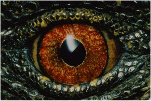Crocodile-expert and conservationist, Dr. John Thorbjarnarson, died of falciparum malaria in India on February 14th at the age of fifty-two.
While many conservationists work with publicly popular animals like tigers and whales, Thorbjarnarson’s passion was for crocodiles. A Senior Conservation Scientist with the Wildlife Conservation Society (WCS), Thorbjarnarson proved instrumental in saving both the Orinoco crocodile and the Chinese alligator from extinction.
Working with the late conservationist Thomas Blohm, Thorbjarnarson established a captive breeding population of the Critically Endangered Orinoco crocodile in Venezuela. Two decades later: the project has released more than 1,500 individual crocodiles into the wild.
Thorbjarnarson also initiated surveys of the Chinese alligator in the Yangtze River to find the species decimated: only 120 alligators survived on a measly 11 hectares. Habitat restoration projects and reintroduction programs for captive bred individuals are now progressing for the Critically Endangered species.
Thorbjarnarson also worked for over a decade with the Cuban crocodile, also considered Critically Endangered because of unsustainable hunting, habitat loss, and breeding with the American crocodile.
WCS has established a memorial fund in John Thorbjarnarson’s name to help continue his work in saving the world’s most endangered crocodilians: Memorial Fund.
Related articles
DNA uncovers nearly extinct Siamese crocodiles in captivity
(11/15/2009) The Critically Endangered Siamese crocodile, once believed to be extinct in the wild, received some uplifting news this week. DNA testing of 69 rescued crocodiles at Phnom Tama Wildlife Rescue Center (PTWRC) in Cambodia found 35 purebred Siamese crocodiles.
Reptiles underrepresented on the IUCN Red List

(11/04/2009) Currently there are an estimated nearly 9,000 reptiles in the world, while the International Union for Conservation of Nature (IUCN) Red List has assessed all of the world’s described mammals, birds, and amphibians, reptiles have yet to be fully assessed, leaving herpetologists with an unclear picture of how reptiles are faring in the world. Currently, 1,677 reptiles have been assessed (less than 20 percent of the total number of reptile species known) with 293 added this year.
50 of the world’s most endangered crocodiles released into the wild in the Philippines
(08/18/2009) The wild population of the Critically Endangered Philippine crocodile Crocodylus mindorensis has just received a very welcome boost. Fifty crocodiles have been released into Dicatian Lake, Isabela Province on Luzon Island.